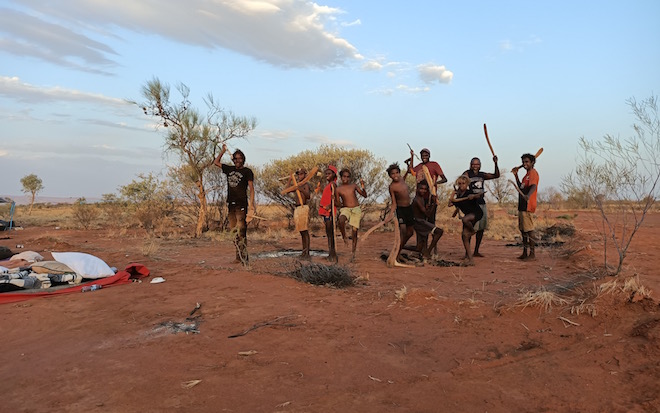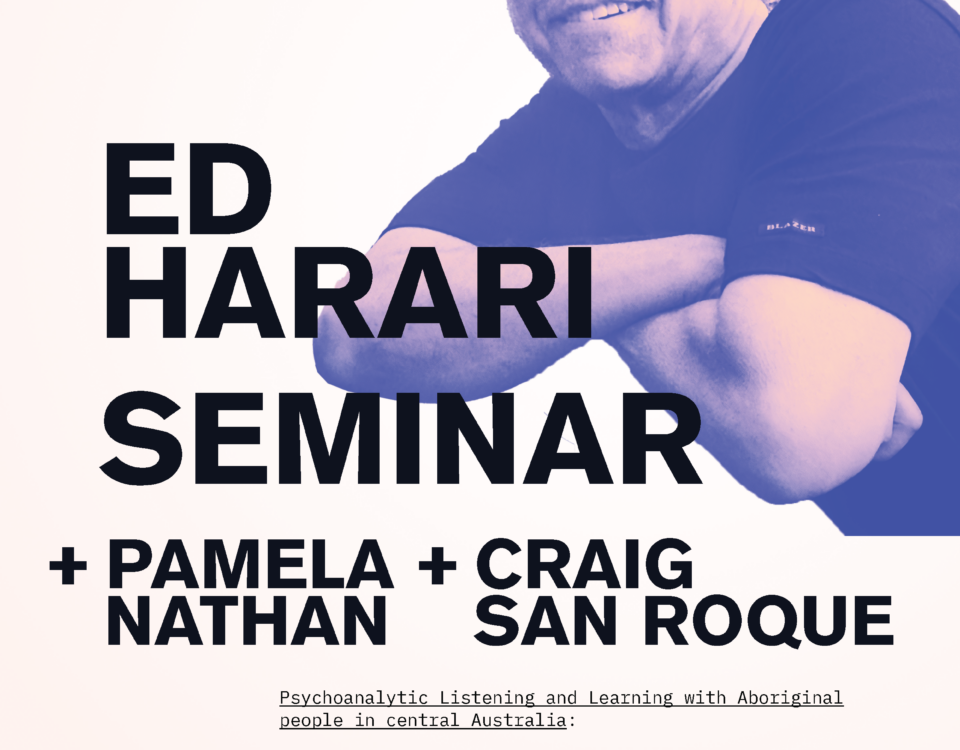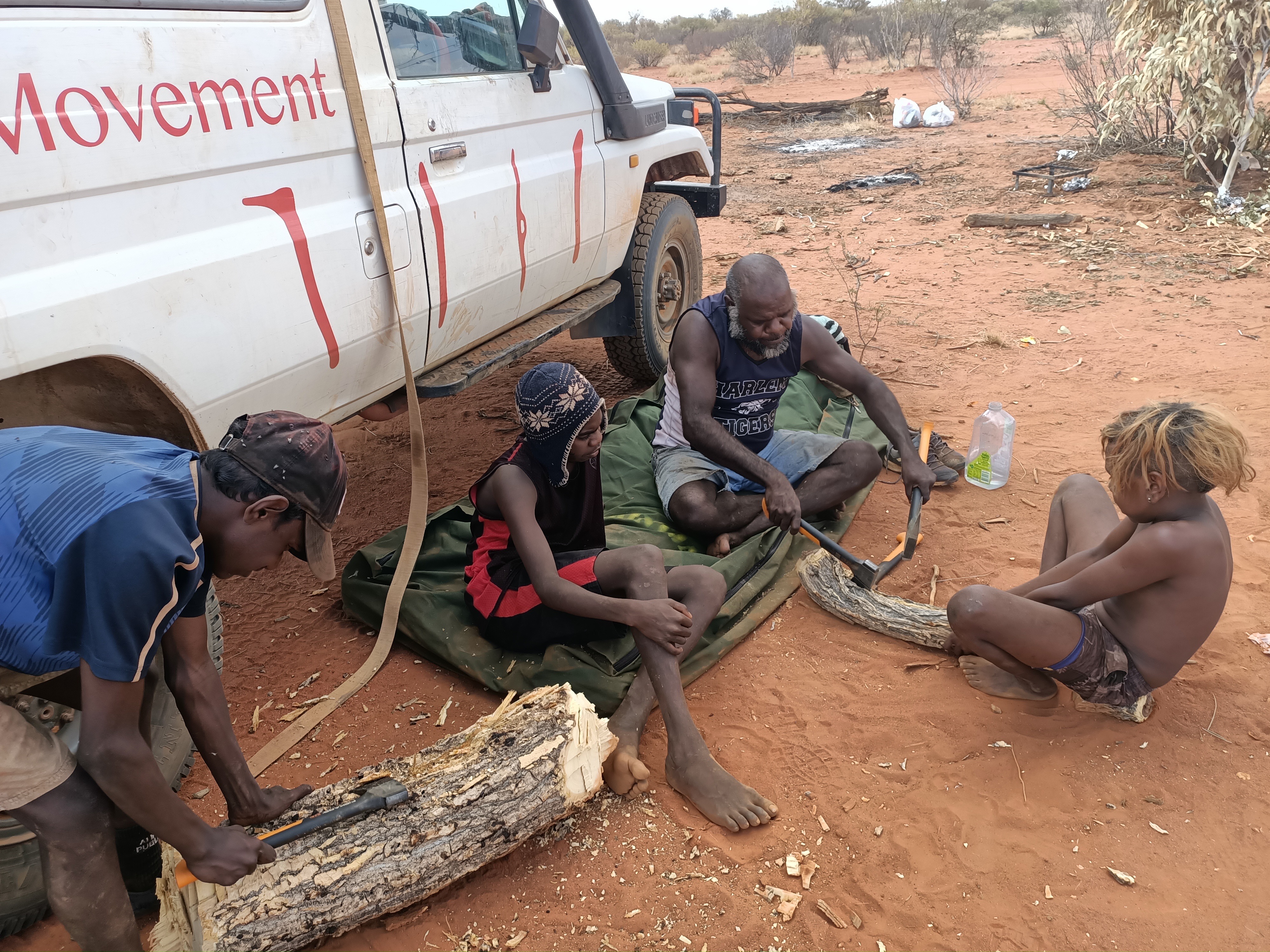
CASSE Newsletter – December 2019
December 3, 2019
POSTPONED – Experience the joy of supporting CASSE with TFN this March!
February 12, 2020Rainer Chlanda is the Program Co-ordinator for CASSE’s ‘Shields for Living, Tools for Life‘ rehabilitation program, which is based in the Alice Springs region for ‘at-risk’ youth and/or young people who have come into contact with the youth justice system to reduce the likelihood of offending or reoffending. It is available as part of the Northern Territory Government’s ‘Creating Safer Communities: Back on Track – Cutting Youth Crime’ Initiative. Rainer’s reflections on a recent camp were published in Alice Springs News Online on January 23, 2020, and are reproduced in full in this blog.
Real young people, not the faceless offender

STORY and PHOTOS by RAINER CHLANDA
This story reflects on the delivery of a program I work in, offering rehabilitation and an alternative to detention to young Indigenous offenders. It was written in the wake of the tragic shooting of Kumunjayi Walker in Yuendumu, who, like the subjects of this story, was a young Warlpiri person in contact with the justice system.
I arrive in Wirliyajarrayi (Willowra) mid-morning Monday and beeline to the store in need of a cold drink and in hope of encountering the people I need to see – the store and surrounding area double as a central hub and meeting place in the community. Within minutes I run into the youngest of our referrals – a small but robust kid with a big personality that’s rendered him the well-loved-joker of the community. He promptly appoints himself as my guide for the morning and we begin the rounds, going house-to-house saying goodbyes, letting on-board our excited group, and apologising to various young’uns for not being able to accept their pleas to come along on the adventure.
Soon we have our cohort of three boys and three young initiated men (the oldest being 15), supported by three adult men, two Elders (including the most senior and authoritative Elder in Willowra who I’ll refer to as “Boss” from here on, and the younger Elder as the “Elder”), our Camp Leader Jamie Tjupurrula and myself, Program Coordinator. The excitement as we drive out of the community is palpable, the young fellas joke and shout, the Elder up front with me speaks animatedly about the land as we head towards Mt Barkly – “there’s the stables from the old station… people used to live in those Yujuku (humpy) and swim in that tank… we have Jukurrpa (Dreaming) about that mountain…”
During the previous week’s consultation all had referred to the chosen camping spot as Mt Barkly and gestured towards a distant beautiful blue stretch of mountain range east of the community. We drive for about 45 minutes towards the range before stopping at a three-way junction. I think we’re just waiting for Tjupurrula’s group but when they arrive the Elder declares that this is the camping spot, adding that they always come here.
I’m a little disheartened. To me the spot looks unremarkable and harsh and doesn’t bear any of the usual hallmarks of a good camping spot. There is just one tree in the centre of the area but half of it is dead and leafless meaning it’s providing next to no shade. The ground is covered in prickles and there’s a rotting cow nearby whose stench wafts in if the wind blows a certain direction. It’s worlds apart from what I had pictured – a shady and serene gulley of the epic Mt Barkly, still far off on the horizon.
While carefully concealing my disappointment, I ask the Elder why they choose this spot? The Elder explains to me that this area is good mutual ground – in between the Countries of dominant family groups from Willowra. Sure enough all the young people tell me where their Countries are, looking and pointing towards the direction and explaining in impressive detail how the borders are defined. No one claims the land we’re on. We set up.
Before sundown we explore the area then deliberate extensively around who sleeps where in the long line of parallel swags. At first I am told that I need to sleep on the end of the line. It’s not explicitly stated but nonetheless becomes clear that I’m on the end as bait or a kind of buffer against the spirits beings, Kudaitja or Milarlpa, who may “snatch” someone in the night. After further discussion, it’s agreed that I should in fact sleep in the middle of the long line as my whiteness deems me more vulnerable. I thank them for their concern and protection and place my swag where directed.
Tjupurrula serves us steaks and salad, we eat together on the ground in an imperfect circle. The young people quiz us about plans in the days to come, and excitedly make suggestions of how the days could be spent, a common request being swimming at a nearby bore and going to the creek bed to do “flips.” We assure them there will be time for swimming and flips but remind them that there is hard work to be done too. All agree, nodding emphatically.
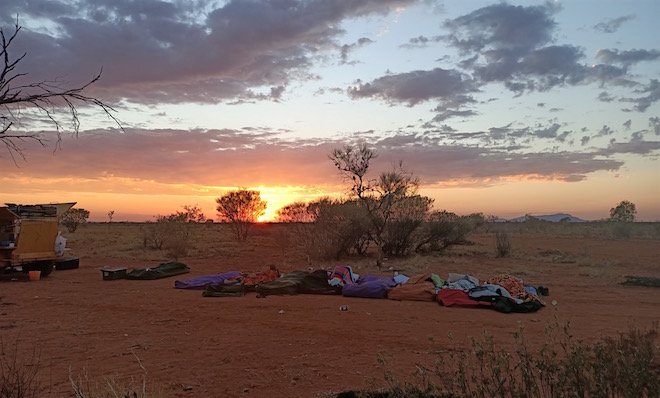
I don’t last long sleeping in the line as the young fellas are teeming with energy and joking well into the night. I state the need to drag my swag away for some peace, they protest the idea and promise to quieten down. Before long their whispers creep back up to the same cacophony, someone accidentally steps on my head, I insist I’ve got to move. After more debate they reluctantly agree and show me a spot that’s importantly away from the dry creek bed (apparently towards it is more dangerous), where I might be OK. I resist one more plea as to why I must sleep near them before they wish me goodnight and good luck.
I wake up before the sun has peeked over the horizon not because of the light seeping into the day, but because of the immense barrage of flies – being cattle country the flies are always bad but on this day they are ruthless. I seek a moment’s refuge in the back of the Troopy and watch as everyone but Tjupurrula and the Elder choose to hide under the swag canvas before facing the day.
As the day presses on we realise the intensity of the flies is due to an equally intense heat – Tjupurrula lets on that he knew it was forecast to be 40 degrees today. It’s a harsh start to our maiden mission. Sudden winds sweep dust into the air which sticks to your skin as you’re sodden with sweat and no amount of water can quench my thirst.
These conditions along with such a recent memory of being in an air-conditioned home has many of the young fellas promptly lose their enthusiasm and begin their appeals to be taken home. When they are reminded of their commitment that anything short of a medical emergency means they can’t return until Friday, the appeals turn to into a sudden onset of various ailments: “I have pain in my stomach… I have fever… I’ve got a big lump in my leg…”
Tjupurrula and I indulge them – checking for symptoms and explain that we are first aid trained and will monitor their multitude of ailments closely.
We head out on our first drive to find trees for tools.

The Boss directs Tjupurrula to a good spot for number 7 boomerangs. They’re in one car as we follow; I have the Elder and all the young fellas while the rest of the grown men are in with Tjupurrula. We drive for 45 minutes or so through country that’s dry and harsh but with diverse plant life that changes rapidly. Everyone appears to know all the tracks so well. I ask what takes them all out there. Hunting! Of course.
Everyone shares stories of shooting kangaroos, emus, bush turkeys and perenties in bountiful numbers. The Elder ends the storytelling by lamenting that it’s hard to find anything to catch now as it’s too dry- it hasn’t rained properly all year.
We arrive at out spot which is an area dominated by Wakirlpirri (Dogwood) trees which The Boss preferences over Manja (Mulga) trees – the tree Tjupurrula was taught to use in Luritja/Pintupi country.
All the grown men get out and face the scalding sun without complaint, but the young fellas again begin protesting, citing all the same reasons why everything “sucks”, with the added argument that the ground is too hot.
I ask them where their shoes are. Most say they are back at camp, one didn’t bring any at all, one shows he has just socks, one proudly shows that his shoes are on his feet (therefore undermining his argument), and one has one shoe but has lost the other. Three shoes between the group.
We all try our various approaches of coaxing them out of the car, I do the empathetic/positive reinforcement youth worker-style persuasion, Tjurpurrula does the stern snap-out-of-it hardened Lawman talk, and the Warlpiri men speak to them in their language – a couple who have direct relatives with us jump out but most stay put.
One young fella asks me for my shoes. I explain that I can’t give them to him as it would be unfair to the rest but agree to join them in barefooted solidarity. I take my shoes off and discover the ground is, indeed, scorching. I continue my appeal which gets progressively more intense as my feet get hotter and hotter then crescendos when I can’t bear to stand still any longer and suddenly run off into the scrub with my axe yelling “JUST COME ON!!!” Something clicks, the bulk of the group jump out of the car and scatter in all directions, also yelling and taking to trees with their axes – not the slow and considered method required to find a suitable tree or branch, more of a cathartic outburst, but most importantly, a start.
We return to camp with various tree limbs of varying suitability for tool-making and sit down to begin carving. The young fellas do the same routine of refusing to get out of the Troopy and begin conjuring up new illnesses (which by now are getting very creative). This time, without discussion, we spare them pep-talks and instead just sit down and begin to work.
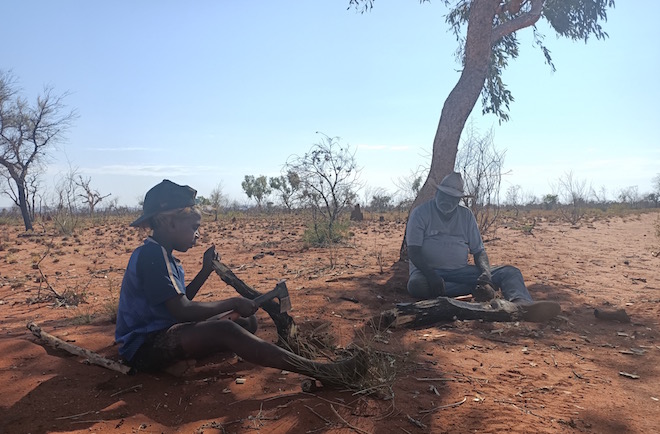
We start carving our pieces with occasional tips given quietly by Tjupurrula and the Boss. Soon a calm descends. I’m less aware of the flies, more comfortable sitting on the ground, not as hot. The clacking sound of the axes striking the wood creates an erratic rhythm you know you are part of. The focus on a single item that you are transforming becomes an obsession. One by one the young fellas leave the Troopy and quietly join the group. Their boundless energy finds a purpose and their voices grow quieter as their axes too join the chorus.
It’s hard to gauge the exact passing of time but I think we do this for hours. There’s a strong sense of togetherness without any pressure to talk or do anything but chip away. I realise that it’s not just the cultural connection that makes the practice therapeutic, it’s also doing something together that engages your senses in a repetitive, rhythmic way; it soothes you and brings you back into your body.
I have heard of the same thing being achieved though drumming or chanting, and that the same principle explains why people hold themselves and rock back and forth when they’re upset – touch and rhythm comforts.
There’s an occasional murmur as someone appreciates another’s tool or provides advice. I ask our youngest member how he feels. He looks up, meets my eye and says “good” with a gentle nod. What about the flies? “Still shit,” he says with the same calm poise before slowly returning his focus to his tool.
Everyone works right up until dinner is served. The tools are put down but the calm persists, voices remain hushed and conversation is gentle. Several young fellas apologise to Tjupurrula and me for being “cheeky” and assure us that we’re “good blokes”. We thank everyone for the day and for being out there with us.
There’s a strong feeling of mutual appreciation, respect and support amongst the camp. You feel the warmth and positivity reinforce and take root as it cycles around. Everyone turns in for a much earlier night than last.
The earlier night allows an earlier morning and after tea and breakfast we’re off on another trip to a different area in pursuit of the Yininti (Bean tree) for wood to make shields. This tree is softer and easier to cut. Often the whole tree is cut down so you can use the main trunk to make large shields. I think the satisfaction of felling a whole tree and the ease of doing it appeals to the group who take to the task much more quickly than the previous day. The Elders and grown men do the work methodically and with much consideration as to which tree to cut, but the young fellas again begin cavalierly hacking into trees indiscriminately.
Tjupurrula says that you can tell a lot about someone from observing how they go about making tools. Sometimes it’s a way of letting out frustration or anger, sometimes of having complete control over something… it depends on the individual’s needs. Someone might need to just hit something repeatedly and having an acceptable way to do that is more important than the end product. I reflect on this comment later, during a group meeting after the camp, when one of the more troubled young fellas, whose problems at home include having his father in prison, is asked “What did you like about tool making?” He answers, “I like hitting it hard!”
Tjupurrula allows everyone to ultimately shape their tool how they wish but also gives guidance: “cut lower… cutting wedges will get through easier… this one can be split down the middle to make two shields…” I watch one young fella absorb his advice, I see his frantic hacking become slower, more considered, and then, incredibly precise.
We haul our branches up onto roof racks then settle down for lunch. One young fella digs up 12 kangaroo tails and one hunted goanna that Tjupurrula buried in coals some time ago. Just before we pass them around we discover we forgot to pack the salt. There’s no question – we wrap the tails in a tarp and head back to camp.
We feast on the meat (nearly a full tail each) then spend the afternoon shaping tools with intermittent trips to the nearby creek bed to do flips. Every young fella in the group can do multiple variations of flips. I wonder, as I often have, why so many Aboriginal kids seems to have this ability, more so than kids from other backgrounds? Is it simply an innate superior athleticism, or is it somehow also cultural? Is there something in their socialisation that tells them to be free and comfortable in their bodies and this becomes backflips, uninhibited dancing and a general gracefulness in movement?

One of the young fellas grazes his knee in a flip gone wrong and asks for a bandage. We hop in the back of the Troopy where he finds the first aid kit and starts rummaging through, emptying each compartment and analysing all the contents.
I withhold the urge to take the kit off him – I’ve become protective of first aid kits over the years due to youths’ curious obsession with them. Upon sighting a kit, young people accessing whatever social service I’ve worked for, would almost invariably ask for a bandage. If I ask where they are injured some (if not familiar with my protectiveness of first aid kits) may respond honestly that they are not injured and that the bandage is for “fashion” or “for fun”. Although this may seem odd, I can understand the appeal; a wrapped-up limb gives you a certain allure, you look rugged or reckless. In fact, there are well-known images Iggy Pop with his hands wrapped in bandages that have the same effect.
But I’ve often wondered if there is more that underpins the desire for bandages. Is it that being attended to, even if there is no physical wound, is nonetheless comforting as someone is caring for you? Or perhaps it’s a way of showing, even in the absence of a physical injury, that they are hurt and in need of attention and care? Things so many of the kids I’ve worked with have lacked.
At this point in the camp I had already defended the kit from many phantom injuries, but this one is legitimate; I try to relax. It’s another stinking hot day and the back of the Troopy is like a little oven ,so we’re both cooking and sweating profusely when the young fella pulls out an ice pack, the ones you shake to make cool, holds it up and asks “What’s this?” As soon as the words “ice pack” leave my mouth I realise it’s a mistake.
He stares at it: printed in big bold letters is the word SHAKE.
Young fella – “Ohh bro, I’m thinking to shake it.” Holding it up threateningly.
Me – “Nah man, put it back, we need it for injuries, let’s fix your knee.”
Young fella – “Ohh but it’d be real good right now, bro.” Looking at me with pleading eyes.
Me – “No dude, seriously, put it back.”
Young fella – “I’m gonna shake it!” Holding it now higher in the air with big wild eyes.
Me – “Brus, nahhh!! DON’T SHAKE IT!”
I can’t take it any longer and lunge for the pack. We do a bit of tug-of-war before I pry it from his grip. The tugging has made the pack a bit cold, it feels wonderful. For a fleeting moment I consider shaking the thing and making a pact with the young fella, we’d share it and not tell anyone, but I come to my senses in time.
We’re now drenched in sweat and panting, the ridiculousness of it cracks us both up. After a good laugh we dress his knee which could’ve been sorted with a Band-Aid, but I allow a big nice bandage to cover it all as a once-off. Throughout the rest of the camp he and I enjoy an inside joke, where he points to the car and tauntingly says, “I might go shake it,” and I go, “Nah, don’t shake it, bro.”
This young fella in particular is an absolute character, remarkably witty humour and charisma for days. All of the group is eminently likeable; they are warm, caring, inquisitive, fair, funny, but somehow all getting into trouble.
On a later camp with the same group I fall ill and am swag bound. They continually check on me, offer me tea, make sure I have water, tell me they’ll ask their grandmothers to make me bush medicine when we’re back in Willowra, and make me my own fire at night.
There is no way any of the group fit the profile of the malicious, spiteful, undisciplined youth you hear some Alice Springs residents bemoan as the culprits behind break-ins, but they have broken into houses.
Borrowing the words and thinking of Bryan Stevenson, an American lawyer and social justice activist: you can only understand an issue fully by getting proximate (close up). In my experience, meeting so many of the youth responsible for anti-social behaviours, I am, for the vast majority of the time, struck by their decency and good nature. It is only once you put a real child in the place of the faceless offender that you fully appreciate that the problem can’t be with the kids themselves as they are plainly good, and instead the problem stems from an inconveniently complicated set of historical and environmental factors that we are all a part of.
If the public, many of whom are understandably angry at the constant car thefts and break-ins, could meet the kids that I do, the question of “What do these kids deserve by the way of punishment?” would give way to “How do we change whatever has led to these good kids behaving so badly?”
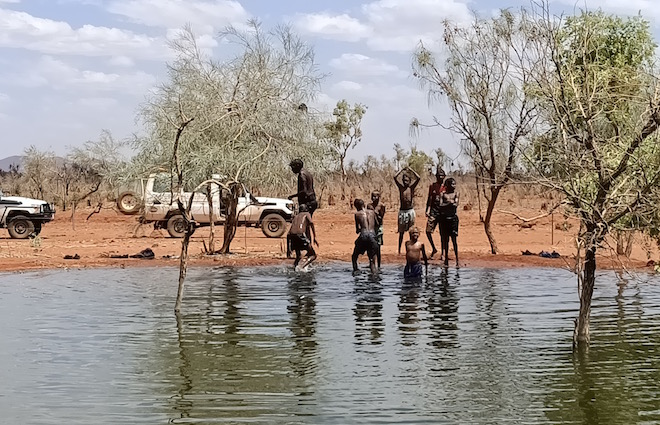
One night I want to create a more inclusive setting for story-telling and decide to move the fireplace in hope that a circle will form around it. I consult the group, everyone has a different idea where it should be which has me dragging a heavy log to different spots around the camp (much to everyone’s amusement). In the meantime, the Boss has walked around the perimeter of the camp with a burning stick and set alight dried bushes and fallen trees creating several bonfires that encircle us. The effect is awesome, the entire area lights up, the red earth glows crimson and warmth fills the space.
My instinctive response is concern that this could start a bushfire. In Alice Springs I wouldn’t dream of lighting such a fire, then I think: of course, the Boss knows how this country burns, and, of course, the fires remain perfectly controlled throughout the evening.
The tight circle I had hoped for doesn’t eventuate, but everyone talks in small groups into the evening. We remind the young fellas why they are there and ask about the circumstances around their offending. They speak freely and openly, predominantly about break-ins; their thinking is clear. We question them in a way that’s more curious than accusatory.
These conversations happen throughout the camp, some arising naturally, some deliberately prompted. After just a few days together the young fellas feel safe and supported enough to talk about a topic that’s fraught with shame and controversy.
We hear their disclosures: breaking into the store because of hunger, hungry because their family had no money to buy food because of payments being cut off or from gambling losses, through boredom, exposure to fighting, grog, and ganja, and pressure from older peers.
We ask how they feel during and after their offending. Answers include scared, excited, shame, wild, sorry, worried… In naming emotions, the aim is to make the unconscious conscious so a concept can be formed of how their offending impacts on themselves and others.
These conversations are always difficult and often fruitless when attempted in town where you are surrounded by potential triggers. In town there are cars like the one you stole, shops you broke into, corners where an adversary might be around, the police… The absence of all those things and the calm of the bush allows some of the quieter thoughts, that usually go unheard, to surface.
On the second last day of camp, after persistent complaints of the heat from the young fellas, the Boss agrees to take us to a waterhole at the base of Mt Barkly – a sacred place where a certain song must be sung if you are to go, a song that only few know, including him.
We drive for hours, it’s maybe only 50kms to the mountain range but it’s on a worn-out boggy track that weaves through scrub so the going is very slow. All the young fellas fall asleep. The Elder and I drive in silence with our gazes fixed on the nearing range.
We finally pull up on a slight bank of a small rocky creek crowded with gum trees at the foot of the range. All the young fellas promptly wake and hop out – no coaxing required for this occasion.
We walk towards the creek, entering the line of gum trees and soon spot a body of water the size of a small swimming pool. A real desert oasis. My heart sings.
The young fellas let the older men take the lead, they start picking up stones and tossing them in the water as they approach, the young fellas do the same, Tjupurrula and I follow suit, guessing this is a custom we should also abide by. We gather around the water, everyone stares, standing motionless and silent. I assume this is also part of the custom and do the same. After a while, with no one making any moves towards swimming, I break rank and ask, “We gonna jump in or..?”
I get looks of frustration and bemusement; one man tells me “You’ll get sick.” I’m puzzled, I think he means in the cultural sense where you get sick if you break Aboriginal Law, but we definitely spoke about swimming here and the Boss sang the song… then I see it, a huge bloated plain-to-see dead cow floating in the middle of the water.
The cow’s brown fur is an uncanny colour match for the rocks of the area, leading to me mistake it for just another rock. I let out a big groan, protest the unfairness of our fate and curse the dead cow. Everyone laughs and ask me how I couldn’t have seen it? Once I finish my little outburst, I take stock of that fact that no one else uttered a word of complaint. Everyone, including the young fellas who had been dying for a swim, simply accepted the situation. I’m impressed with their stoicism and a bit embarrassed that my reaction lacked any.
We explore the area, walking through the creek bed, savouring the shade of gum trees and at least the presence of water. Everyone remains quiet, speaking only in hushed voices – something I assume is done out of respect for the sacredness of the place. The quiet slows time down and makes you look more intently; appropriate for a beautiful place.
Without discussion we begin to meander back to the car for our crawl back to camp.

After dinner Tupurrula stokes the fire and asks all the young fellas to sit down as he wants to tell a story. In an instant he has achieved the setting I was trying for a few nights earlier – everyone sitting on the ground, huddled in a group looking across the fire at him. I note that this is how you captivate an audience; offer a story, everyone loves stories. Our youngest asks me to sit with him, I do.
Tjupurrula tells the engrossed group of his hard upbringing; his parents’ divorce and subsequent division in his family, beltings from his dad; getting mixed up in petty crime to support emerging drug habits, threatened incarceration, suicide attempts.
He tells his deeply personal story with feeling and conviction, drawing representations of it in the sand with his finger. All the young fellas’ gazes are fixed on him. I look around and see that all the men, sitting further back in the dark, are also holding the same gaze. The strong sense of togetherness – as when we were all tool-making – returns.
Tjupurrula continues his story which takes him from Queensland, to Western Australia, to the remote community of Mt Liebig. His family send him there to stay with an Aunty to get away from trouble. He lives in the Western Desert with Pintupi/Luritja people for years and meets a senior Elder whom he grows close to. This Elder is an expert tool-maker and senior Lawman who, in time, asks to impart his knowledge to Tjupurrula, as he’s getting old and fears his knowledge will die with him. Tjupurrula sits with him for four years and learns how to make traditional tools, he learns Luritja, song lines and Dreaming stories.
Tjupurrula becomes respected in the community and is asked to go through Law (initiation ceremony to become a man, and in Tjupurrula’s case, also becoming Luritja/Pintupi). Now initiated, he joins the other men in taking boys through Law every year (a ceremony that can go for months and can have the group travel hundreds of kilometres).
Tjupurrula tells us that the embrace of the Elder and the Luritja/Pintupi people and the power or their culture saved him from a life of profound grief, and one destined for imprisonment or an early grave. He tells us that the Elder died several years ago and that when he did Tjupurrula vowed to help others the way the Elder had helped him. Tjupurrula tells all the young fellas that they too can choose to learn from their Elders and follow their Law, Warlpiri Law, and that it will keep them strong and protect them.
The moment it is sensed that the story has concluded, there’s a barrage of requests and comments from the young fellas to “keep going” or “tell another one” or “good story, bro” or “thankyou, big fella” or “you’re a good bloke, big fella.” The transition from the stillness and poignancy of the story to the sudden liveliness of the young fellas makes us all laugh. Tjupurrula says that’s all for tonight. Everyone thanks him again with pats on the back and positive affirmations before shuffling off to bed.
I stay up a while, moved by the story and everything that’s happened out there. I think about how this rich and ancient culture is so fundamentally and inextricably a part of everyone else out there with me. I contemplate what it must be like to have so many reference points for who you are that are bestowed to you at birth, to be able to say: my tribe is Warlpiri, there is my Country, this is my Dreaming and that my Totem, this is my skin name, all these people are my kin. I imagine it gives a powerful sense of identity, belonging and protection. I’m glad they have it.
Before camp I administered a psychological wellbeing and cultural resilience measure, putting 53 statements to the young fellas, to which they had to respond with one of five responses, ranging from “not at all” to “heaps.” Some answers show that the group have experienced high levels of distress in their lives, including suicidal ideation (thinking) and depression. But to one of the statements, “I like being Aboriginal”, everyone answered “heaps” without hesitation.
Although these young fellas understand that problems around health, poverty, violence, imprisonment, overcrowding, unemployment… the list goes on… plague their community far more than others, their Aboriginality is absolutely precious and loved.
I find this hope-inspiring, but also in the back of mind is a brewing concern. Hope-inspiring when I think about them looking out at the enduring resistance and strength of Aboriginal culture and the many examples of it forging a proud and positive contemporary existence. Concerning when I think about how their sense of what it means to be Aboriginal is impacted when they see all the terrible problems and trauma in their communities that seem to belong more to them than anyone else.
I think about the many forces that compete for what is the appropriate feeling and expression of a modern Aboriginal life.
What will they see and feel more?
Their communities’ anger at a brutal colonisation and its legacy of disadvantage? Or their pride and strength in surviving it all?
Dominant Western society helping them? Or oppressing them?
Foreign value systems wilfully blind to their own? Or trying to find a way to respectfully co-exist with theirs?
Will the Police be seen as a force that serves and protects them? Or a threat to their very lives?
While there is so little certainty in so many domains of these young fellas’ lives, it is eminently clear that their Aboriginality is paramount and unwavering , and that what it comes to mean as they move through their troubled yet rich lives involves an interplay with all people and systems that share this land.
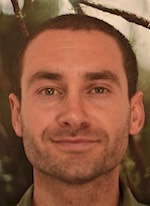
Rainer Chlanda is an Alice Springs-born youth worker and winner of the Fitzgerald Youth Award – NT Human Rights Awards 2018. He is the program coordinator of “Shields for Living, Tools for Life”, funded by the NT Government, Territory Families “Back On Track” Initiative, and provided by CASSE (Creating A Safe and Supportive Environment).
Also by Rainer Chlanda: Youth crisis: broken window of tolerance
On CASSE, by Pamela Nathan & Jamie Millier Tjupurrula: Making new tools for living





